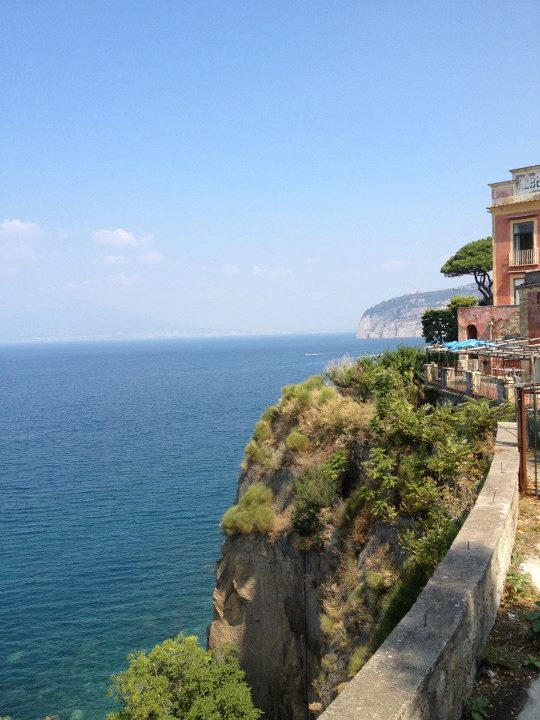
After two weeks of fighting jet lag and getting adjusted to a culture shock, I have finally built up enough brain power to write again. That being said, Italian customs at the airport was quicker and easier than I thought it would be. Luckily, after my nine-hour direct flight from Miami International Airport, all I had to do was hand over my passport and get it stamped, no questions asked. The next part of my journey however (getting to my new Roman apartment by lugging my two huge suitcases across cobblestone streets), was more difficult to say the least. I got laughed at by literally every Italian I struggled by, realizing that Italians do not only live small, but they are prepared to live small. Wishing I could abandon one of my luggage pieces, I walked uphill toward my apartment, and eventually arrived at my new home without air conditioning, a clothes dryer, hot water, or bed larger than a hobbit-sized one.
After learning to appreciate the charm of my traditional Italian apartment and noticing that I have the convenience of two grocery stores, a butcher, two cafes and three great restaurants on my street, I began opening my eyes to the fact that this would be a semester of a lifetime. Following my first three weeks of attempting to walk and talk like a Roman, I will share my notes on American perceptions of Europeans, European perceptions of Americans, and how our customs clash.
- They wear sandals and Sperry’s, regardless of the fact that cobblestone streets are much more injury-free while wearing tennis shoes. Stubbing your toe or twisting your ankle is to be expected during your first few weeks in Rome, but resorting to sneakers puts a big red flag on your face, which would read “American.” Somehow, Italians seem to be able to rock their Sperry’s like track stars, with no stubbed toes involved.
- Italians really do eat pasta, all … the … time. In fact, pasta is not even considered a main dish. It is an opening course to your next course of pizza or meat. Still, I have not seen one overweight Italian since I have been living here, and there is no such thing as a state-of-the-art gym facility such as L.A. Fitness, or UM’s very own Herbert Wellness Center. Italians use their carbs as energy to walk everywhere they go. Not to mention, portion sizes are under control and foods have about a third of the grease as American foods do at home. (Note: Never ask an Italian waiter for add-ons to your food. No extra sauce or spices; it is rude to the chef. However, add-ons will rarely be desired due to the fact that true Italian cuisine is truly delicious).
- Italians really do drink wine, all … the … time. In fact, they have a glass with lunch, a couple of glasses at their “aperitivo hour” (their version of a happy hour but better … where you get free all-you-can-eat cold cuts, cheeses and grilled vegetables with your wine order), and a glass with dinner. Again though, Italians might get loud and happy, but they never EVER black out or puke.
- Luckily, in order to recover from their tipsy stages, the entire city has a daily nap time called “siesta;” a custom where all businesses, shops and restaurants shut down after lunch time until 4 p.m. to do nothing other than go home and rest. (Note: Europeans think Americans are too rushed. When traveling to Europe, expect your dinners out to take more than three hours, and expect a glare or two if your pace is any faster than a stroll.)
So far, I have only travelled within Italy. By the way, the Almafi coast is the most romantic place I have ever seen. If you want to reenact a scene from “Wedding Crashers,” Sorrento is the place considering the abundance of outdoor, easy-to-access weddings that you will come across. In a couple of weeks, I will begin traveling outside of this boot-shaped country. I will write again after my Oktoberfest escapades.
Ciao –
Alli





